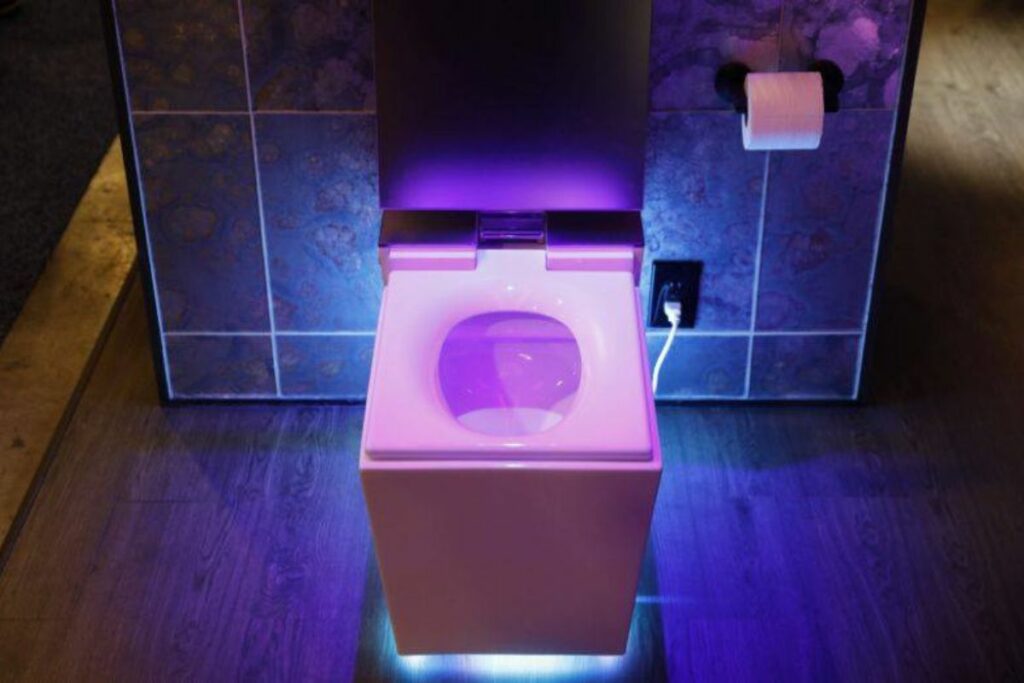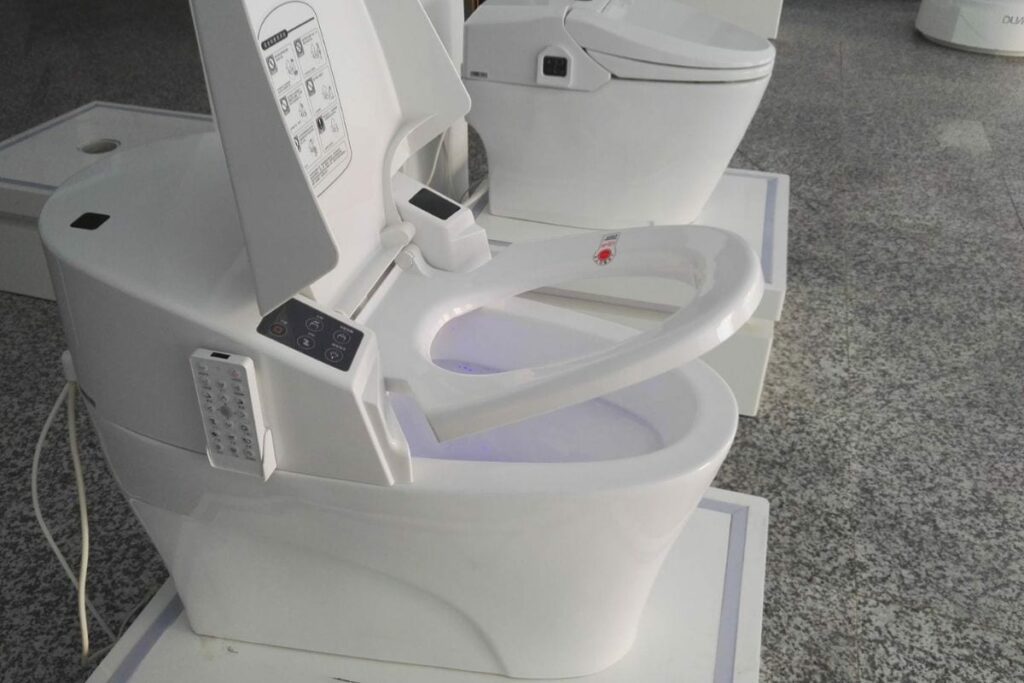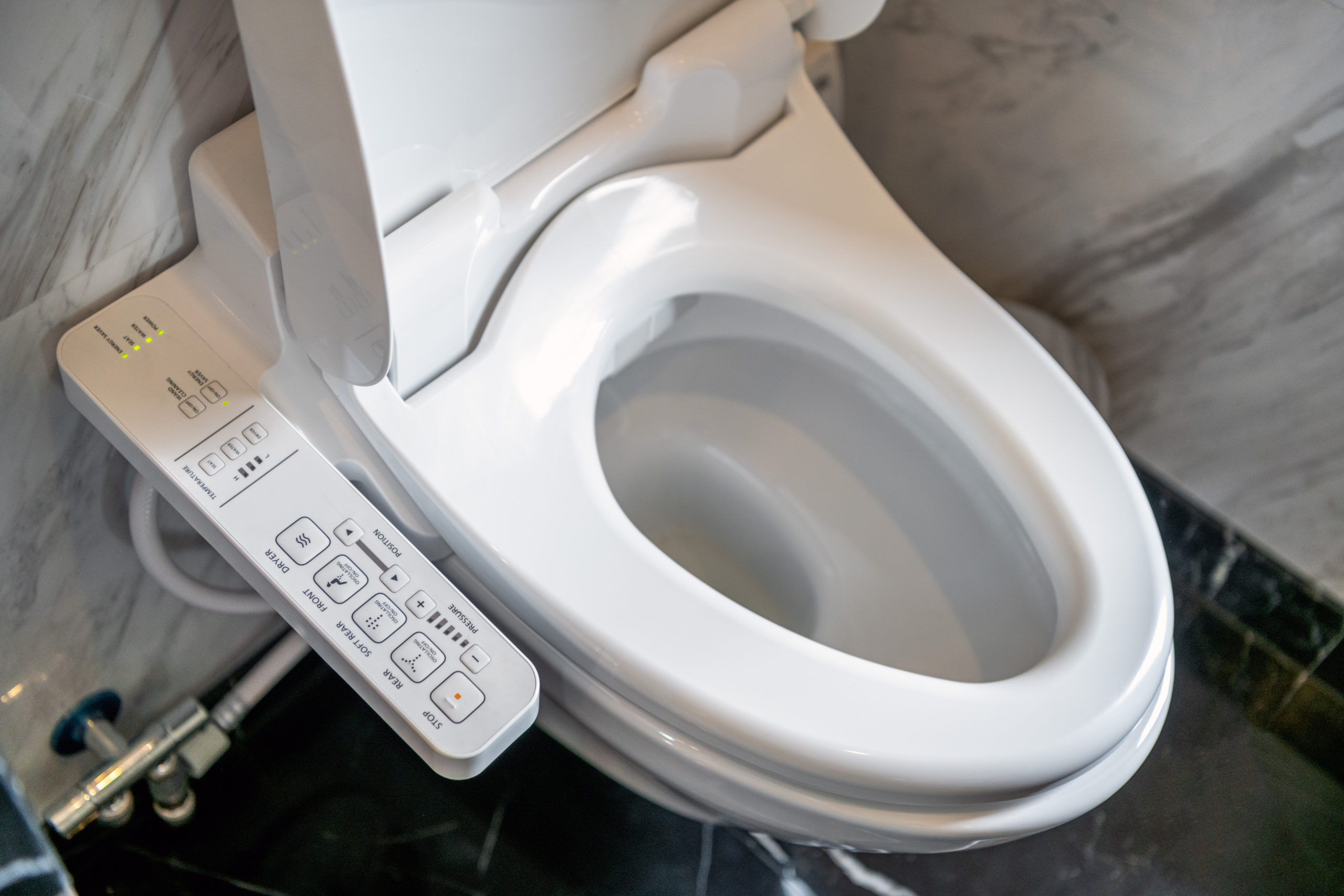A regular toilet is very common and has a very simple design. With recent improvements in electronics and computers, there is now what’s called a smart toilet. In this article, I will explain what a smart toilet is.
Overall, a smart toilet is a toilet that takes measurements or has inbuilt digital functionality such as opening and closing the lid, flushing automatically, and a self-cleaning function. Smart toilets also don’t have a water tank like a regular toilet.
Below, I provide a list of the different features that smart toilets have, how much smart toilets cost compared to a regular toilet, and if you need toilet paper with a smart toilet.
What Additional Functionality a Smart Toilet Has
Smart toilet is a broad term and not all smart toilets have the same functionality. Some have incredibly complex functionality and can measure your biometrics such as hydration, and the nutrient levels in your body based on your poop. Here’s a list of the main functionality smart toilets have.
The additional functionality a smart toilet has is Alexa, or similar, an automatic open and close feature, seat warming, automatic bidet, self-cleaning, an automatic night light and complex instruments that measure nutrient levels in your feces and urine, and biometrics.

Smart toilets that can measure your biometrics are similar to smartwatches that measure your blood pressure, heart rate, and footsteps.
Very complex smart toilets that have this functionality measure the nutrients in your poop and urine, as well as, biometrics like your body temperature, and heart rate. Over time, they will calculate an average. They can also make recommendations based on your current nutrient levels, and other biomarkers.
For example, if on a single day you only go pee once, it will be able to know that you are slightly dehydrated. The next day it can remind you to drink more water. However, smart toilets with this functionality aren’t the norm yet. Most smart toilets on the market have:
- An automatic flush
- An automatic open and close
- Alex, Siri, or similar
- Seat warming
- An electronic bidet
- Self-cleaning
Smart toilets have a sensor that will sense when you approach the toilet and then open the seat. After a certain amount of time has passed without being used it will automatically close the toilet.
Also, when you get up from the toilet it will know, and automatically flush. Some also have an electronic bidet, that will begin using a remote. The self-cleaning feature is activated using buttons that are located on the toilet.
The Main Advantages of a Smart Toilet

The main advantage of a smart toilet is it’s more hygienic. Rather than needing to lift the seat or lid yourself, it happens automatically. When you use a toilet, if there are any germs on the seat or lid they can be transferred to your hands.
Then when you pull down your pants to use the toilet these germs will transfer to your clothes. This can be avoided by opening and closing the lid and seat with toilet paper, and then dropping the toilet paper into the toilet.
But, when you do so any germs on the toilet roll from the person who used it last can transfer to your hand. Therefore, a smart toilet is overall more hygienic.
Many smart toilets have no water tank
As you may know, regular toilets have a water tank. The water tank can be positioned behind a wall and not be visible – for wall-mounted toilets – or it can be attached directly to the toilet. Many smart toilets are different, and a cold water line is connected directly to the toilet. Here’s a video that shows how a smart toilet connects to the plumbing.
This is a much simpler design and makes a smart toilet more compact than a regular toilet. It’s capable of flushing the toilet because it has an inbuilt pump. But, some smart toilets still have a water tank and don’t have an internal pump.
There are two forces that cause a toilet to flush. One is the downward pressure of the water into the bowl. The other is a suction that is caused when the water gets over a kink in the pipe at the base of the toilet. Known as a D or S kink. The force of gravity of the water flowing downwards creates a suction that pulls the water and waste in the bowl downward.
Do You Need Toilet Paper With a Smart Toilet
Toilet paper is required for all toilets, even those that have a bidet. Smart toilets are very advanced and there are new features so it’s possible that you don’t need to wipe after using a smart toilet. But, here’s whether you need toilet paper for a smart toilet.
Toilet paper is required for a smart toilet. Many smart toilets have a remote-controlled or automatic bidet. As well as, an automatic drier. This provides a much better clean than toilet paper and can mostly dry your rectum. But, in general, you will still need to wipe using toilet paper.

The drier on a smart toilet functions very similarly to a hand dryer that you find in public restrooms. It helps a little bit but overall does a very poor job at completely drying anything unless you spend a very long amount of time drying your rectum. And it’s faster to quickly wipe using toilet paper.
How Expensive a Smart Toilet Is
Smart toilets have a range of features that a regular toilet doesn’t have. However, electronics have gotten cheaper and cheaper. So, here’s how expensive a smart toilet is.
On average, a smart toilet is around $500 to $1000 depending on the brand, and features. It’s possible to buy a smart toilet seat that you attach to a regular toilet, these can be as cheap as $150. A regular toilet costs around the same at $500 to $1000.
Therefore, if you decide to get a smart toilet it won’t be any more expensive. The one downside of a smart toilet is that it has more components. Which means more things can go wrong with it.

Amos Christen graduated with a bachelor’s degree in Interior Design from Drexel University — Philadelphia, PA. Since 2003, Amos has worked with top interior design professionals in this area, including architects and interior/graphic/lighting designers. As a skilled interior designer, Amos Christen is highly versed in fine arts and crafts and uses that to supplement his main area of expertise. He often publishes articles related to home décor on several websites, including Sprucetoilets.com, Sprucebathroom.com, and Mybesuitedhome.com. He also contributes to leading interior design magazines.
